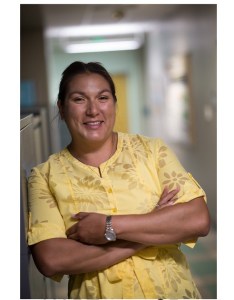
Title: Public Health Training Certificate in American Indian Health
Location: Seneca Nation
I seek to improve the lives of American Indian and Alaska Native people through biomedical research, community-based participatory research, STEM education, and mentoring.
The reason I chose this path can be summarized in a prayer from my Oceti Sakowin (Sioux) relatives, Hecel lena oyate ki nipi kte, meaning, So that the people may live.
Biography
Obtaining foundational knowledge to address public health disparities
The Public Health Certificate program offered by the Center for American Indian Health, which I began in July 2018, is a unique way to merge biomedical research with public health research related to American Indian and Alaska Native communities. The training in public health will provide foundational knowledge to conduct quality and relevant research in Native communities that augments my training in biomedical research. My public health studies will also allow me to collaborate with colleagues across the nation and further develop my career as the only American Indian biomedicalresearcher with advanced training in chemistry, molecular biology, vaccine development, and translational research related to American Indian health disparities.
I am currently an NIH Institutional Research and Academic Career Development Award post-doctoral fellow in the Department of Molecular Genetics and Microbiology at the University of New Mexico. In this role, Im studying oncogenic genotypes that may be risk factors for HPV among American Indian women of the Great Plains. Findings from this study will help better screen high-risk women for HPV and cervical cancer. Im also researching attitudes toward HPV and vaccination among Native American professionals and students.
In August 2018, I will transitionto a tenure-track position as an Assistant Professor in the Department of Chemistry and Biochemistry at Northern Arizona University. My research will focus on novel vaccine development using self-assembling peptides and virus-like particles. I am also studying sexually transmitted infectious such as HPV, gonorrhea, and chlamydia. My position is supported by the Partnership for Native American Cancer Prevention, the Southwest Health Equity Research Collaborative, the Office of the Vice President of Research, and the College of Engineering, Forestry, and Sciences.
A warrior is one who sacrifices herself for the good of others
When not in a lab, I serve as a Captain in the Army National Guard. I believe that the high enlistment rates of Native people in the military stem from the ideals that these are our original lands and we have a sense of responsibility for protecting the people of the land. Sitting Bull stated that a warrior is
one who sacrifices himself [herself] for the good of others. His [Her] task is to take care of the elderly, the defenseless, those who cannot provide for themselves, and above all, the children, the future of humanity.
Over the last nine years of service, I have followed this path, being responsible for the maintenance and inventory of over $2 million worth of vehicles and equipmentas well as the lives, well-being, and training of hundreds of soldiers.
The nations sole 2013 Native American doctoral recipient in chemistry
In addition to my military service, I am committed to increasing the representation of American Indian and Alaska Native people in STEM fields. Throughout my graduate training, it became apparent that few Native students pursued STEM degrees and even fewer obtained doctoral degrees. In 2013, the National Science Foundation reported 52,760 doctoral recipients across all fields and racial/ethnic subpopulations. Among those recipients, only 119 were American Indian and Alaska Native.
Within the chemistry subfields, a total of 2,491 doctorates were awarded. However, I was the only AIAN doctoral recipient in chemistry for 2013.
The drive to pursue science starts early. My interest in science and health began decades before on the Seneca Cattaraugus Indian reservation in western New York. Studying the life cycle of caterpillars fostered my scientific curiosity.
Therefore, my efforts to increase Native American representation in STEM fields include volunteering at diversity awareness events, judging local science fairs, teaching at minority serving institutions, and mentoring young scientists from various backgrounds.